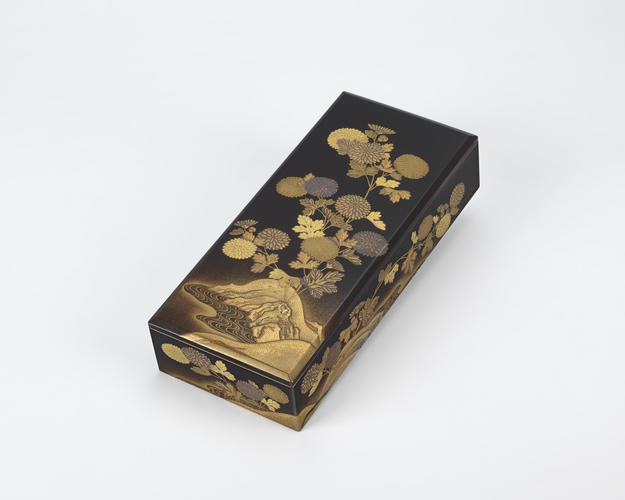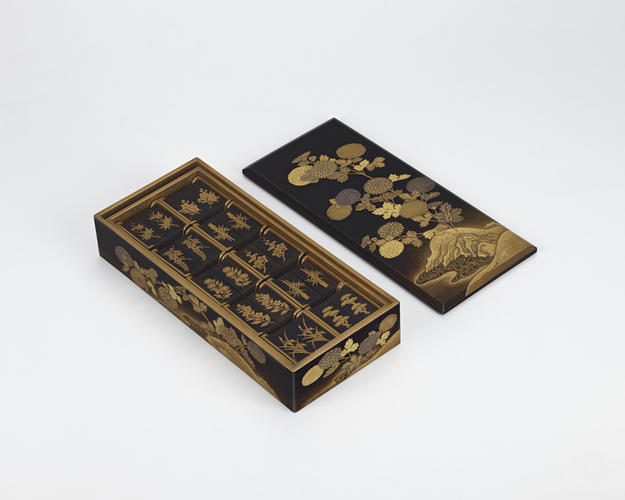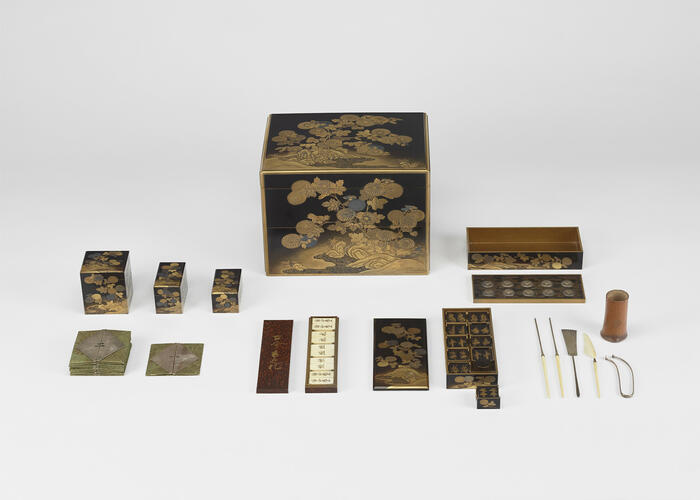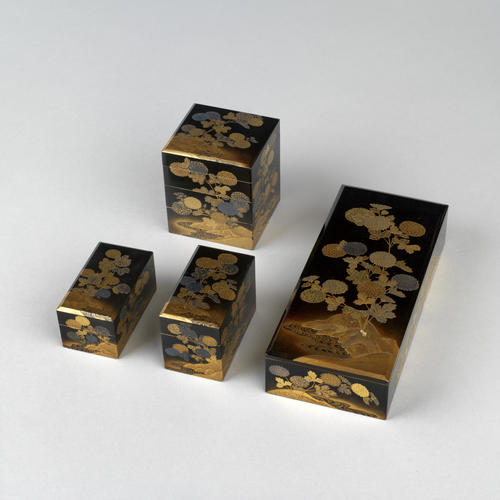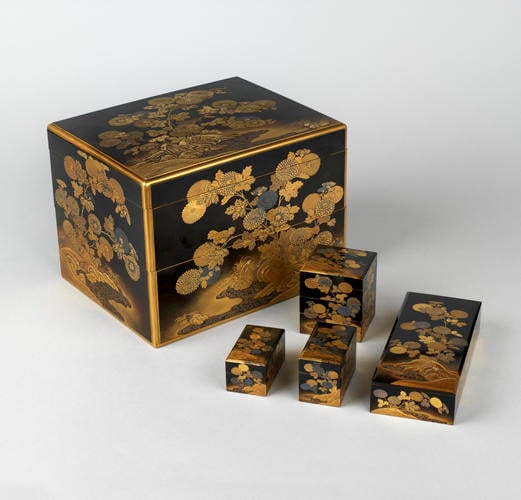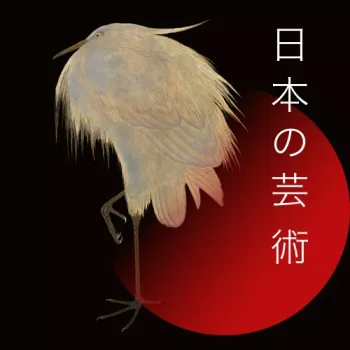Box eighteenth century
Black, gold and silver lacquer on wood | 3.4 x 15.9 x 7.0 cm (whole object) | RCIN 4681
-
Incense was introduced to Japan from mainland Asia during the sixth century, and its appreciation quickly became a mark of refinement. During the Muromachi period (1391–1573) ‘the way of incense’ (kōdō) emerged as a fashionable aristocratic activity governed by strict rules of etiquette, alongside the tea ceremony (chanoyu) and flower arranging (ikebana). Rare incense woods were collected and burned on special occasions, or associated with particular poetic moods and scenes from classical literature like the Tale of Genji. By the mid-Edo period, elaborate incense games had become formalised and divided into separate schools. Sets of matching utensils in lavish lacquer boxes were included in the bridal trousseaux of women from daimyō families. These wares were also increasingly enjoyed by wealthy merchants and chōnin (townspeople).
This set contains some of the equipment required for an incense game called jishū-ko (literally ‘ten types of incense’). Before the competition begins, three different kinds of incense wood are burned and named for the guests. Then follow ten rounds in which the master of ceremonies burns small pieces while the guests try to identify each, recording their answers on paper slips. The rounds include three of each of the original types of incense, as well as one piece of a fourth kind, the ‘guest incense’ (kyaku-ko).
Within this lacquer box (kōbako) are counters, paper pouches for answer slips, a bamboo pot with assorted utensils for lighting the wood and a sectioned tray with silver chrysanthemum-shaped studs for placing small mica plates holding the heated incense. Larger sets might include a box for players to insert their answers, writing equipment for record-keeping and tools for cutting the incense wood.
This is part of a rectangular two tiered box (RCIN 3484) for the incense game, with inset rim, the overfitting tier having a similar rim to accommodate the flat-topped cover. Decorated on the top and the sides, on a black ground, with flowering chrysanthemums growing by rocks on the banks of a stream, the blooms in full or partial relief and sometimes picked out in silver, the rocks in takamakie sprinkled with gold flecks, the edges gilt. The interiors black and the base decorated in nashiji. Other boxes contained within RCIN 3484 are a square three-tiered box, RCIN 29458, lined with white metal, and two small rectangular boxes, RCIN 29456 and RCIN 29457, one of which is similarly lined.
Text adapted from Chinese and Japanese Works of Art in the Collection of Her Majesty The Queen: Volume III and Japan: Courts and Culture (2020)Provenance
Almost certainly presented to Prince Alfred, Duke of Edinburgh by the Emperor Meiji, 1869.
Previously considered as having been acquired by Queen Mary, c. 1922. Recorded in Queen Mary's Private Property Vol. III, no. 169. -
Creator(s)
(nationality)Acquirer(s)
-
Medium and techniques
Black, gold and silver lacquer on wood
Measurements
3.4 x 15.9 x 7.0 cm (whole object)
Category
Object type(s)
Place of Production
Japan




